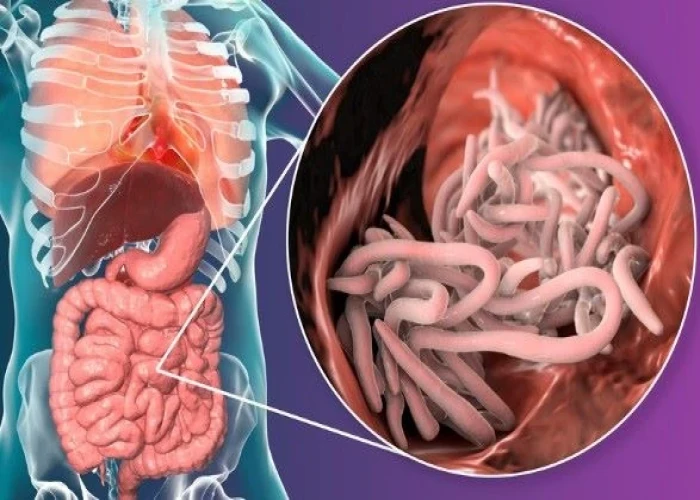 Welcome
Welcome
“May all be happy, may all be healed, may all be at peace and may no one ever suffer."
Patent ductus arteriosus (PDA)

Patent ductus arteriosus (PDA) is a heart condition that occurs when a blood vessel called the ductus arteriosus, which is present in fetuses and normally closes shortly after birth, remains open. This results in blood flow between the aorta and pulmonary artery, which can cause problems such as increased blood pressure in the lungs, heart failure, and damage to the blood vessels in the lungs over time.
PDA can occur in infants born prematurely or full-term, and is more common in females than males. Symptoms can include rapid breathing, poor feeding, sweating, and fatigue. Treatment options depend on the age and size of the patient, as well as the severity of the condition, and can include medication or surgery to close the PDA. Without treatment, PDA can lead to serious complications, including heart failure and pulmonary hypertension.
Research Papers
Disease Signs and Symptoms
- Body odor
- Rapid heartbeat (tachycardia)
- Shortness of breath (dyspnea)
Disease Causes
Patent ductus arteriosus (PDA)
Congenital heart defects arise from problems early in the heart's development — but there's often no clear cause. Genetic factors might play a role.
Before birth, an opening that connects two major blood vessels leading from the heart — the aorta and pulmonary artery — is necessary for a baby's blood circulation. The connection diverts blood from a baby's lungs while they develop, and the baby receives oxygen from the mother's circulation.
After birth, the ductus arteriosus normally closes within two or three days. In premature infants, the opening often takes longer to close. If the connection remains open, it's referred to as a patent ductus arteriosus.
The abnormal opening causes too much blood to flow to the baby's lungs and heart. Untreated, the blood pressure in the baby's lungs might increase (pulmonary hypertension) and the baby's heart might enlarge and weaken.
Disease Prevents
Patent ductus arteriosus (PDA)
There's no sure way to prevent having a baby with a patent ductus arteriosus. However, it's important to do everything possible to have a healthy pregnancy. Here are some of the basics:
- Seek early prenatal care, even before you're pregnant. Quitting smoking, reducing stress, stopping birth control — these are all things to talk to your doctor about before you get pregnant. Also discuss medications you're taking.
- Eat a healthy diet. Include a vitamin supplement that contains folic acid.
- Exercise regularly. Work with your doctor to develop an exercise plan that's right for you.
- Avoid risks. These include harmful substances such as alcohol, cigarettes and illegal drugs. Also avoid hot tubs and saunas.
- Avoid infections. Update your vaccinations before becoming pregnant. Certain types of infections can be harmful to a developing baby.
- Keep diabetes under control. If you have diabetes, work with your doctor to manage the condition before and during pregnancy.
If you have a family history of heart defects or other genetic disorders, consider talking with a genetic counselor before becoming pregnant.
Disease Treatments
Treatments for a patent ductus arteriosus depend on the age of the person being treated. Options might include:
- Watchful waiting. In a premature baby, a PDA often closes on its own. The doctor will monitor your baby's heart to make sure the open blood vessel is closing properly. For full-term babies, children and adults who have small PDAs that aren't causing other health problems, monitoring might be all that's needed.
- Medications. In a premature baby, nonsteroidal anti-inflammatory drugs (NSAIDs) — such as ibuprofen (Infants' Advil, Infants' Motrin, others), available over the counter, or indomethacin (Indocin), available by prescription — might be used to help close a PDA. NSAIDs block the hormonelike chemicals in the body that keep the PDA open. NSAIDs won't close a PDA in full-term babies, children or adults.
- Surgical closure. If medications aren't effective and your child's condition is severe or causing complications, surgery might be recommended. A surgeon makes a small cut between your child's ribs to reach your child's heart and repair the open duct using stitches or clips.
- After the surgery, your child will remain in the hospital for several days for observation. It usually takes a few weeks for a child to fully recover from heart surgery. Occasionally, surgical closure might also be recommended for adults who have a PDA that's causing health problems. Possible risks of the surgery include hoarseness, bleeding, infection and a paralyzed diaphragm.
- Catheter procedures. Premature babies are too small for catheter procedures. However, if your baby doesn't have PDA-related health problems, the doctor might recommend waiting until the baby is older to do a catheter procedure to correct the PDA. Catheter procedures can also be used to treat full-term babies, children and adults.
- In a catheter procedure, a thin tube (catheter) is inserted into a blood vessel in the groin and threaded up to the heart. Through the catheter, a plug or coil is inserted to close the ductus arteriosus.
- If the procedure is done on an outpatient basis, you or your child probably won't stay overnight in the hospital. Complications from catheter procedures include bleeding, infection, or movement of the plug or coil from where it was placed in the heart.
Preventive antibiotics
In the past, people who've had a PDA were advised to take antibiotics before dental work and certain surgical procedures, to prevent endocarditis. Today, preventive antibiotics are no longer recommended for most people with a patent ductus arteriosus.
You or your child may need to take preventive antibiotics the first six months after a catheter repair procedure, if there's still damage after the repair, or if you had an infection in the heart previously. Talk to your doctor about whether you or your child needs to take antibiotics before any procedures.
Needed follow-up care
If you have a PDA, even if you had surgery as a child, you may be at risk of developing complications as an adult. So it's important to have lifelong follow-up care, especially if you had corrective heart surgery.
This follow-up care could be as simple as having periodic checkups with your doctor, or it may involve regular screenings for complications. The important thing is to discuss your care plan with your doctor and make sure you follow all of your doctor's recommendations.
Ideally, a cardiologist trained in treating adults with congenital heart defects will manage your care.
Disease Diagnoses
Disease Allopathic Generics
Disease Ayurvedic Generics
Disease Homeopathic Generics
Disease yoga
Patent ductus arteriosus (PDA) and Learn More about Diseases

Tonsil cancer

Tetralogy of Fallot

Dry mouth

Convergence insufficiency

Transient ischemic attack (TIA)

Childhood asthma

Round Worm

Dyslexia
Patent ductus arteriosus, pda, পেটেন্ট ডাকটাস আর্টেরিয়াস, পিডিএ
To be happy, beautiful, healthy, wealthy, hale and long-lived stay with DM3S.
